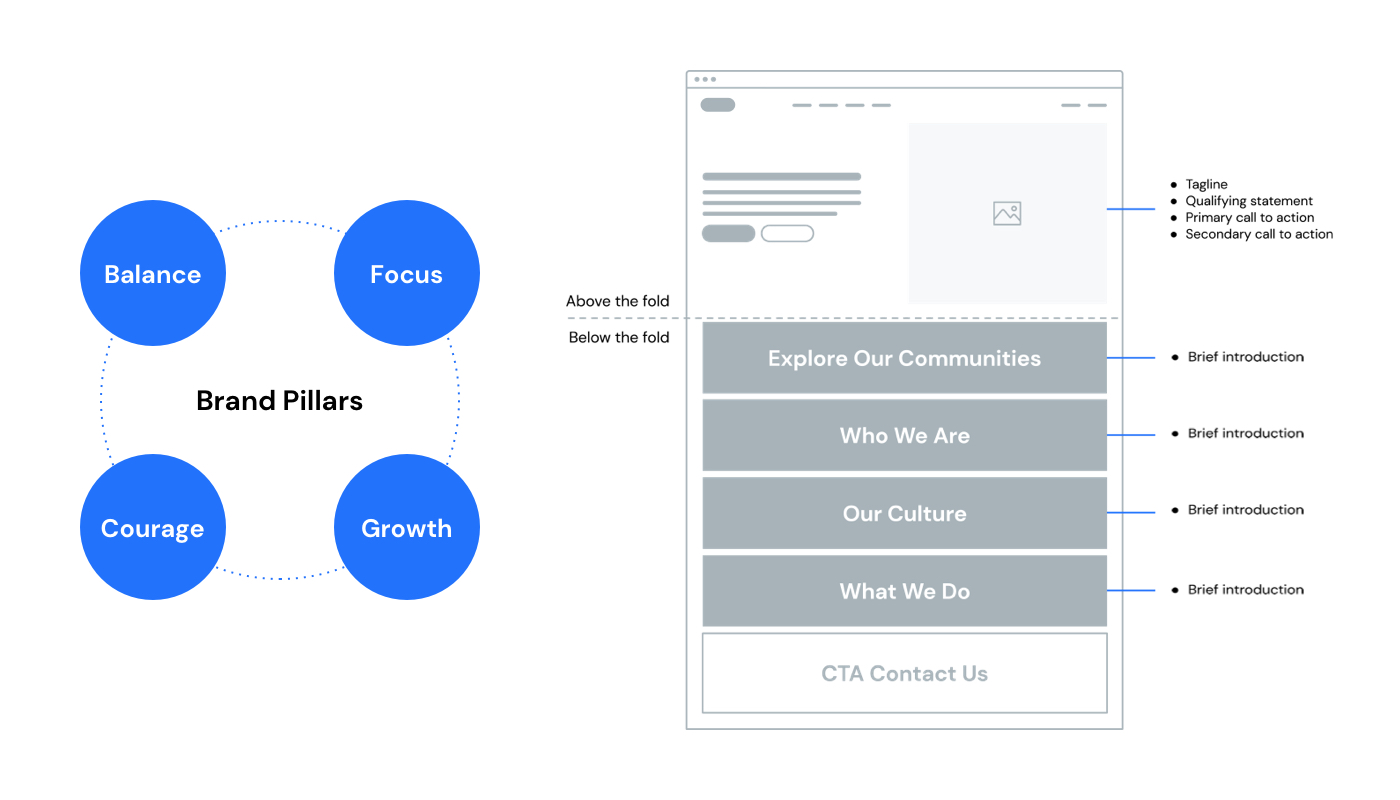How to Give Helpful Design Feedback
The HOW is just as important as the WHAT.
Client feedback is an integral part of the design process. After all, as we’re often fond of saying, “We’re the ones building the house, but you’re the one who’s going to live in it.”
Well-structured, collaborative client feedback is just as essential to project success as the talent and team doing the work. It allows all stakeholders to ask smart questions, give helpful feedback, and enrich a creative team’s understanding of a client’s background, vision, and proclivities. All of which makes for the strongest end product.
Everyone wins.
1. Get Back to Strategy
The first rule of creative critique is to focus on the project strategy and business objective. Undeniably, we all have personal preferences regarding language and design elements. Before jumping in with feedback, however, think back to the project objective and target audience. Are the creative elements speaking to these directions, or is your reaction more personally driven? Continually reviewing the original core strategy helps keep feedback relevant and helpful.

2. Be Detail Oriented
When giving feedback, details are your friend. Instead of simply saying, “I like it,” explain what you like about a creative presentation, and use specific examples from the composition whenever possible. If something specific is striking or challenging, speak up. Provide any context that might help the design team make informed decisions in the future.
For example, if you see a homepage design and love it for the large, full-screen background image, don’t hesitate to say so! The design team can implement that information to create supporting internal pages. The closer we can get to the ‘why’ and ‘what’ behind your reactions, the more helpful your feedback will be.
3. Ask Questions
While most of our clients love giving feedback during our design presentations, not everyone feels comfortable doing so. If this is you, just ask questions!
We’ve never met a question we didn’t like. You don’t need design credentials to voice constructive, helpful, and implementable criticism. Our priority is to put forward the best design for your organization and audiences, and we need your input to reach our project goals.
4. Remember: We’re All Human
We’re all human, and feedback can be subjective. We all have different, often profoundly personal perceptions, especially regarding design and language.
If you are in a presentation and don’t like aspects of a design, or find something confusing, talk about the challenging elements. Use first-person pronouns around expressing your opinion (“I am confused by” or “I feel that”) rather than declarative statements (“This doesn’t work”). This tactic helps reinforce that you are voicing a personal opinion and allows a creative team to understand your perspective better.
This isn’t a “nice to have” – it’s essential for creating a productive environment where everyone has each other’s success in mind.
5. Resist the Urge to Solve
The strongest and most effective critique avoids being prescriptive. Rather than spelling out a specific action for the creative team to take, express a reaction or challenge for the team to solve. There may be multiple ways to reshape a design experience or address copy changes.

We’ve all read copy, visited a website, or seen a video that looks like it was wrestled over by multiple hands with competing agendas. We avoid the wrestling match by clearly outlining the problems to solve in our critique sessions and letting our lead creative engineers get under the hood and do their best work.
6. Get Your Team Involved
The stakeholders whose work is impacted by the branded experiences that we’re developing must have the opportunity to directly contribute to the final result.
We can’t always incorporate all feedback, but at the end of the day, our team should be able to rally around newly created work and feel a sense of pride in how your company is being represented. Making them feel involved is sometimes all it takes. It also helps train the different members of your team to be on the same page about new strategy, messaging, and brand value.
7. Consolidate Your Feedback
While making sure multiple perspectives are gathered is key, one of the most important tips we can provide – and we can’t stress this enough – is the power of consolidated feedback for larger teams.
We highly recommend having someone as the main point of contact who will act as a facilitator for compiling and consolidating feedback. This streamlines the process for everyone, and in the chance of differing opinions, this point of contact can handle tie-breaking themselves or direct differing opinions our way.
Here are some of the ways clients have structured their feedback in the past, which really streamlined the design process and improved the turnaround time:
- Organized: They collected feedback from all the stakeholders, organized it into a single document, and structured the questions/comments/revisions on a page-by-page basis. It was streamlined and straightforward. Without having to sort through a handful of documents and emails, the design revisions could begin almost immediately.
- Specific: They included details about what was and wasn’t working and provided the thought process behind the use case. Since they know their customer best, it’s always great to know why something is or isn’t working and have some insight into their primary objective. Whether they love or hate it, the more direct, the better. This enables us (the design team) to address any concerns head-on.
- Not overly prescriptive: They provided feedback focused on the end goal and what obstacles they might face, which lets us figure out a way to meet those objectives from a design standpoint. As designers, we’re ultimately problem-solvers, so as long as we know the problem — we can find a solution.

In Conclusion
How feedback is provided, and the structure of giving feedback is just as important as the feedback itself. Being intentional and thoughtful about your feedback helps ensure the strongest and most relevant input. Input that makes for the strongest and most effective branded materials. Branded materials that empower your business and your brand.

About north street
We engineer the thoughtful transformation of great organizations. Our proven process helps us understand what your competitors are doing right — and wrong. Want to learn more? Let’s chat.


























